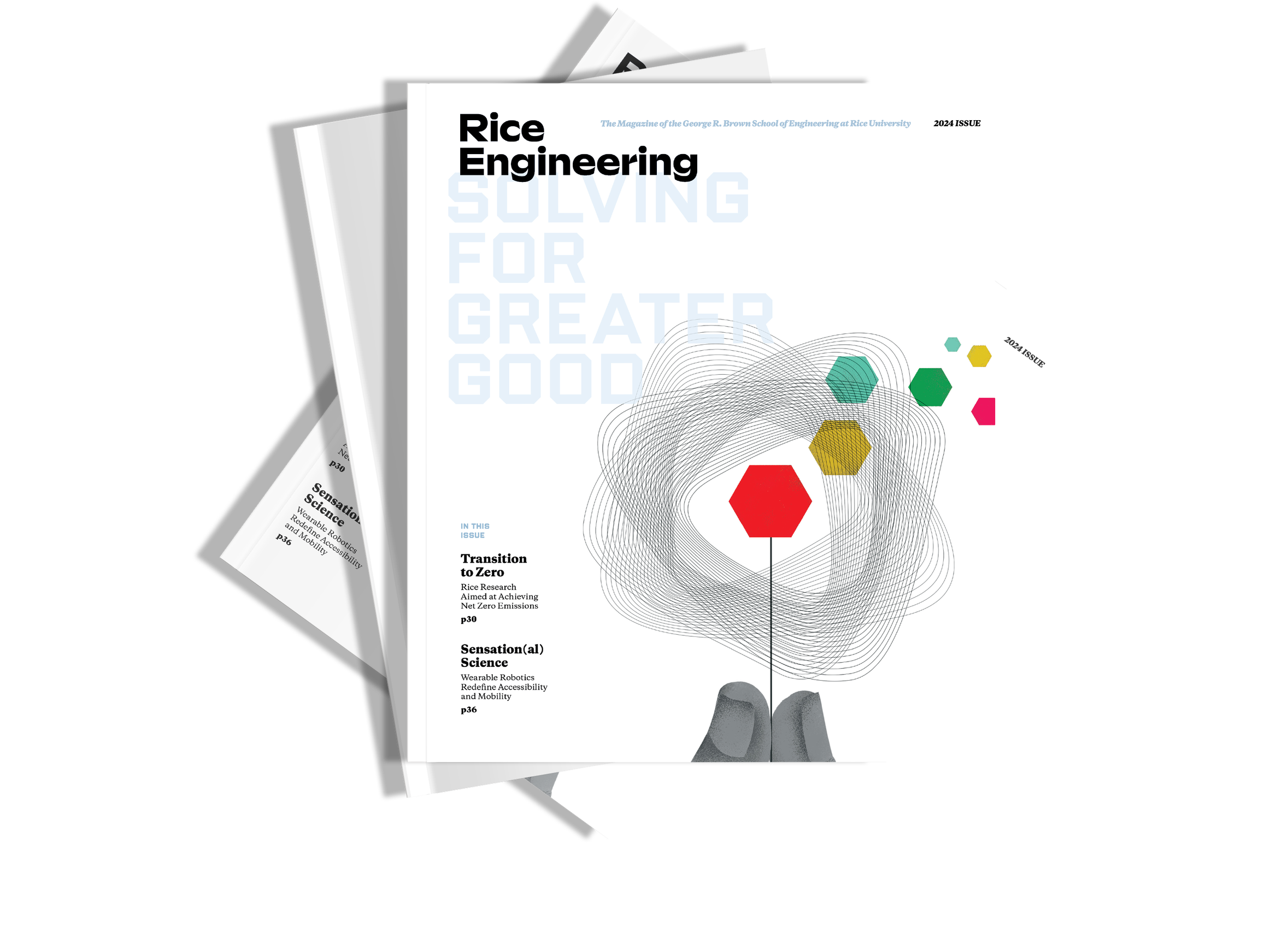
The spring 2024 issue of Rice Engineering Magazine is here!
At Rice Engineering, we are driven by a passion for innovation and a commitment to responsible engineering practices. It’s with great excitement that we unveil the new design of Rice Engineering magazine, which underscores our dedication to excellence in research, education, and service. The 2023-24 issue is full of news about how Rice Engineering is solving for greater good.
A Patient-Centric Approach
Increasingly, robotics researchers are listening to consumers – that is, the patients whose lives they aim to improve.

“There remains a substantial gap between the needs of users and the technologies that are available. Something like half of upper-extremity prosthesis users eventually abandon their powered prosthesis in favor of simpler body-powered devices or no device at all,” said Marcia O’Malley.
In July, O’Malley took part in the Institute of Electrical and Electronics Engineers World Haptics 2023 conference held in Delft, the Netherlands. The gathering resulted in a paper co-written by O’Malley and other researchers and published in the journal Science Robotics.
“Despite our best intentions,” she said, “we lack an understanding of how prosthesis users prefer to use their prostheses. We’re only beginning to understand how prostheses are represented in the brain. Although we envision robotic limbs that are indistinguishable from natural limbs, what we have are complicated and delicate pieces of engineered metal and plastic that work best in a laboratory environment.”
O’Malley and her collaborators concluded that prosthesis users must be included in the early brain-storming phase of device development. The workshop in Delft included a panel of prosthesis users who completed a survey devoted to their needs and experiences.
Some of the results, O’Malley said, were surprising. For instance, panelists reported daily usages of their devices ranging from less than two hours to more than 10 hours. The reasons given for reduced usage included weight, comfort and limited functionality.
“It’s difficult to generalize the results,” O’Malley said. “Most panelists expressed at least some interest in richer haptic feedback features, though there was concern regarding the impact of more features on prosthesis reliability. This sentiment wasn’t universally shared, however. Some panelists expressed no interest at all in the addition of haptic feedback and instead preferred simpler prostheses that were more inconspicuous and comfortable.”
The survey also noted significant discrepancies between patients who had lost one limb or both, and whether the loss was congenital or acquired. “These observations are highly personalized,” O’Malley said, “and this is an important aspect that necessitates our engagement with this population early in the design process.”
Patients also expressed concern that people without financial means or adequate medical insurance are less likely to afford costly prostheses.
“Overall, we concluded that a more nuanced approach to the needs of prosthetic users is called for. The one-size-fits-all approach doesn’t work. The features that patients want can’t be determined by the scientific community rather than the users themselves,” O’Malley said.
